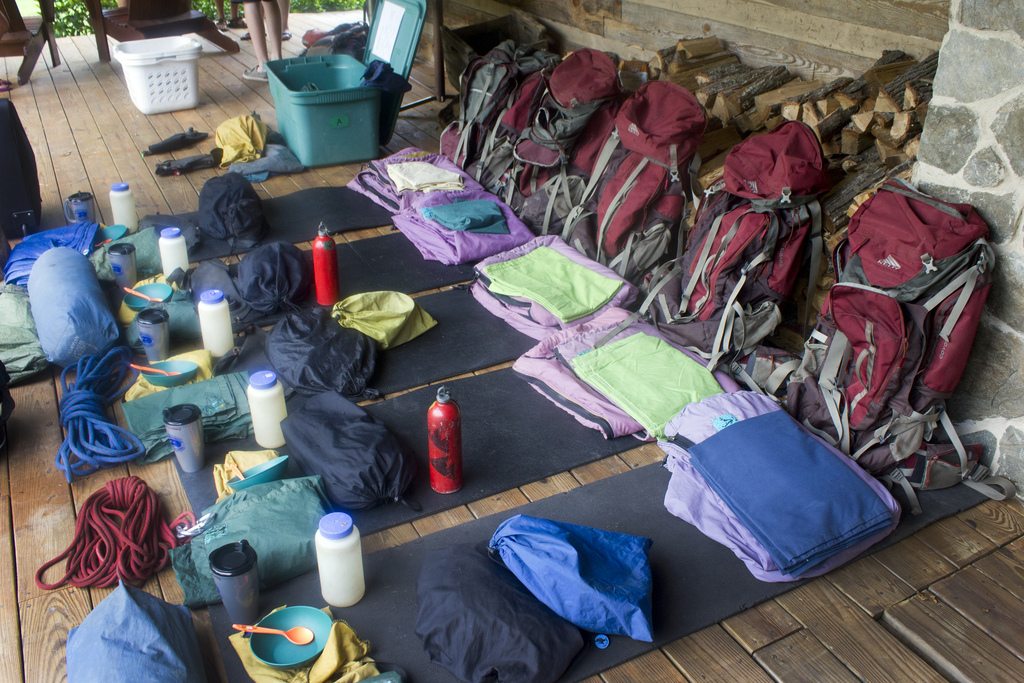Planning for a thru-hike takes a lot of…planning. Unlike a simple day hike (which often takes a bit of planning as well), you often need to plan months in advance to be fully prepared. From planning out everything from which campsites you’re going to sleep at, to your gear and necessary backpacking skills, you also need to plan your fuel. By this, we mean, your food.
Preparing your food schedule for a thru-hike is difficult. For one, you can’t be picky. What you get is what you get, and what can fit in your backpack is what you get. There are of course other factors that go into prepping your food, other than just bringing it along.
So, here’s your three step guide on how to plan your food schedule for a thru-hike:

Step One: Know What You Food Possibilities
Eating on a thru-hike is a lot different than eating at home or in a restaurant. It’s also a lot different than when you go car camping, as you obviously can’t bring a lot of ingredients with you. You may need to eat foods you’re not so fond of or foods that you may have to repeat often.
The first thing to remember is that most people who thru-hike don’t cook a majority of their foods. Having to schlep along a cooking stove for that much time can really be a hassle. Of course, if you look forward to cooked meals, once in a while, then that’s all up to you, and you’ll probably want to cook something at least once along your journey. (Remember, depending on what campsites you stay at, there should be firewood for you to cook with, too.)
Eating “Raw” Foods
So, that leaves you with “uncooked” food options, which can be separated into fresh and non-fresh categories. Your “fresh food” involves foods like tuna, peanut butter, olive oil, Honey Buns, oatmeal, cheeses, tortillas, etc. (We know what you’re thinking…not really fresh, but it’s the freshest you’ll have while on the trail!) The key to eating these kinds of “fresh” foods is bringing ingredients you can mix up. Ex. One day, cheese on tortilla. Next day, peanut butter on tortilla. Viola!
There’s also, of course, powdered foods and dehydrated foods and freeze-dried meals…your “just-add-water” choices for your thru-hike. This list can include anything from prepared meals by Mountain House, to jerky, dried fruit, powdered milk or eggs, instant potatoes, etc. You will also want to keep energizing and nutritious snacksin, like nuts, CLIF bars, granola, etc. (Ramen is easy, but eat too much of that, you’ll have low energy.)
Note: Variety is key. You will drive yourself crazy if you constantly eat the SAME thing every meal. Spend a little extra money and give yourself some variety on the trail. Even if it’s not a steak dinner, you’ll be thankful you gave yourself choices.

Step Two: Organizing Out Your Meals for the Long Haul
The logistics of planning your food schedule for a thru-hike can be hard to visualize. But, the fact of the matter is, your food will take up more of your bag than anything else you bring along.
And, deciding how much food to bring is much like packing underwear. More is better than less. You’re going to be burning a lot more calories each day you hike, and those calories need to be made up for in decent-sized meals. Have you ever really heard of anyone being full on the trail? No. When you sit down to eat, you’re going to go IN on your food. So, have enough of it.
When you go on a thru-hike, you need to organize your food. The best way to do this is at home at your table, lay out all your meals and snacks for each day you’re out on the trail. Get very specific. Whatever you plan on eating at that meal, you’re going to eat. Add a snack to each meal, then have a separate bag of snacks for each day. Organize each meal in that Ziploc, and label it. You may change your mind about what you want to eat when, so no worries if what you planned to eat for lunch on day #3 gets switched with dinner on day #5.

Step Three: Resupplying
For most thru-hikes, part of planning your food schedule is putting together your resupply boxes. While you’ll need to bring a lot of food with you for the first leg of the trip, you can’t bring a whole grocery store in your bag. You’re going to need to resupply at several points. The best tip for packing your resupply boxes is to keep up the variety and don’t put a limit. Try to mix up the boxes from what you’ll have before the stop, so you can get excited for some new foods. Keep the boxes organized (or at least with Ziploc bags inside) so you can be ready to continue your hike right away.
Now that you know how to plan your food schedule for your thru-hike, you can get moving and get eating in no time!








